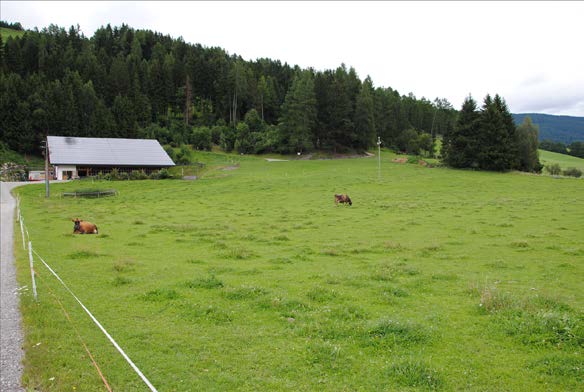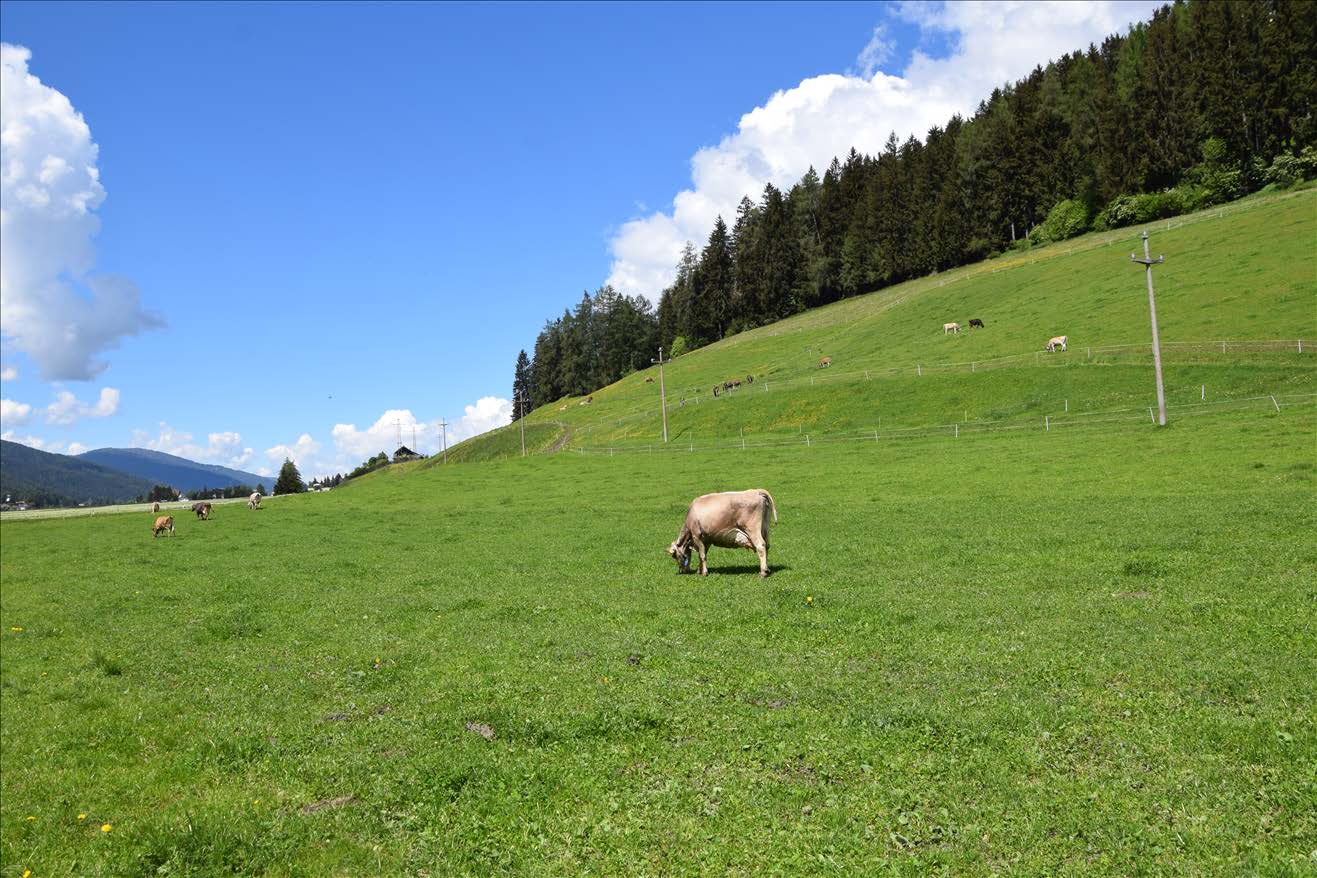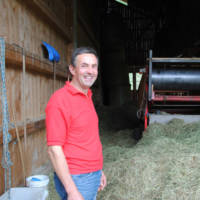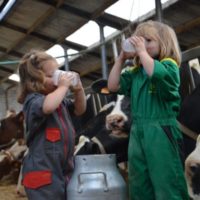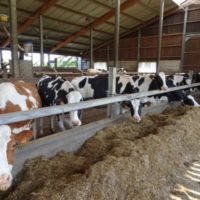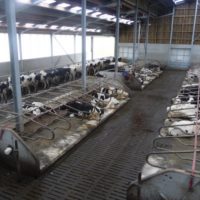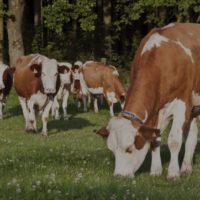Short sward grazing and combination between barn-drying of hay, dehumidifier and photovoltaic plant
Sustainable production with few external imports and reduction of working time
Farm: “Baumannhof”
Location: Toblach/Dobbiaco (South Tyrol), Italy
Case study
 Short sward grazing and combination between barn-drying of hay, dehumidifier and photovoltaic plant (.pdf)
Short sward grazing and combination between barn-drying of hay, dehumidifier and photovoltaic plant (.pdf)
Description
Background
The joy of trying out new ideas, the constant search for optimisation and the high motivation of the farmer were the decisive factors for the step-by-step developments on the 15-ha large dairy farm. The collaboration with the local extension service for mountain farmers (Bergbauernberatung Südtirol) was helpful for the planning and development of the ideas.
The farm’s innovation cannot simply be fixed at a single point, but results from the interaction of several sub-innovations that enable more cost-effective production and improved working conditions. The need to reduce working time arises in particular from the fact that the farm is purely a family business where the farmer and his wife work full-time.
Detailed description
The first important step in restructuring the farm was the new construction of the stable and the barn. The concept of the building was developed by the farmer himself and then built with a high amount of own labour. The animals’ welfare was the most important factor in the subdivision and furnishing of the stable. Animal-friendly materials were chosen and so, for example, the floor was fitted with rubber mats and the cubicles were made of wood.
The unheated stable ensures a high degree of light and fresh air for the animals, which is complemented by the outdoor paddock. In addition, a ventilation system was integrated, which works without external energy. This is possible by using the energy of the photovoltaic system and the warm air rising at the high rear wall of the stable. A new approach was chosen for the method of manure removal in order to ensure trouble-free operation even at sub-zero temperatures. The manure is removed directly into the pit without the slurry being first fed into the transverse channel and then further into the pit. On cold winter days, the heat from the slurry is used additionally as underfloor heating for the animals in the stable.
The appropriate orientation and inclination of the roof enable an efficient energy production through the photovoltaic system. In addition, the hay drying system works very efficiently in terms of energy consumption and drying capacity. This is made possible by the optimised design of ventilation performance, ducts and dehumidifier.
Another important step was the conversion to a grazing management. Originally, the farm operated an intensive silage feeding system with year-round indoor housing. Now, however, no silage is fed. The dairy cattle are kept using the short sward grazing system (German: Kurzrasenweide) in such a way that the use of concentrates is low and the purchase of external feed is hardly necessary. If the ground is dry enough in spring (mid- to end-March), the animals are allowed to go out on the pastures, even if there is no visible grass growth yet. This prepares the animals for the subsequent diet change. During the entire vegetation period, the animals graze eight hours a day on the pasture and remain in the stable only from end-October on. This requires breeds suitable for grazing, which can cover the energy requirements from herbage. Braunvieh and Jersey are kept and a breeding selection towards grazing suitability and efficiency in the use of roughage is performed. The young animals with a minimum age of six months are sent during the summer months for about 95 days to the summer pastures. In winter, the animals are supplied with the farm’s own high-quality hay. The high roughage quality combined with reduced forage production costs is guaranteed by the well-functioning drying system in combination with a dehumidifier and photovoltaic modules.
Advantages
As a result of the introduction of the short sward grazing system (German: Kurzrasenweide), costs are reduced both for the supply of forage and for the mechanisation of harvesting and fertilization. Fuel costs are reduced as well. In addition, agricultural work is facilitated and the working time management optimised. The adaptation and simplification of work processes results in good living conditions for humans and animals.
In January 2018, after a six-month conversion, organic certification took place. The reduced conversion period for organic farming was possible due to the previous participation in agri-environmental schemes. Another important point is the production of haymilk with higher milk prices. Haymilk producers do not use silage and only hay is fed in combination with grazing. Per cow and lactation, 7,500 kg of milk are obtained. Every year, about 100,000 kg of milk are being delivered to the local cooperative dairy. The remaining milk amount is being used for feeding calves and the farm’s own requirements.
There is no off-farm purchase of fertilisers and only the farm’s slurry is used. However, the haymilk production causes difficulties with the fertilization, as the guidelines require a waiting period of 21 days from the fertilizer application to the next herbage use, which in the intensive short sward grazing system would occur earlier.
The introduction of the sub-innovations has reduced labour costs and enhanced net profit. Animal welfare was improved and expenses were greatly reduced. For example, the concentrates requirement has been reduced from 2,000 kg to 700 kg per cow and year, and consumption will be further decreased prospectively. In terms of hygiene and ingredients, the farm has always been among the top five farms delivering to the local cooperative dairy in recent years. This high milk quality is rewarded by the cooperative through a higher payment for the delivered milk and currently comes to 0.64 €/l. At the moment, however, the milk quality is not fully acknowledged, as the local dairy does not yet have an organic production line. In addition, organic concentrates are more expensive than conventional ones. However, the organic production is acknowledged by the payments for organic farming. Due to the constant search for optimization, the farmer has some goals and ideas for the future. According to the farmer, there is always room for improvements.
From a structural point of view, however, he is very satisfied with his farm. Therefore, the ideas for the future relate more to the operating procedure and in particular to the marketing of the products.
Adoption criteria
If a farm wants to implement the short sward grazing system (German: Kurzrasenweide), it requires sufficient pastures close to the farm and breeds suitable for grazing, which can cover their energy requirement mainly with herbage and roughage. In addition, technical competence is necessary, as grassland must be constantly monitored and the farmer must quickly react to changing weather conditions. With regard to the farmer himself, willingness to rethink work processes on the one hand and readiness to solve problems in unusual schemes on the other hand are required. It is important to break new ground and to think unconventionally. In addition, one must be prepared to receive criticism from the working and social environment. After all, if you go down so many unconventional paths and succeed, you can be sure of being considered a rebel and an outsider.
Future prospects
Due to the constant search for optimization, the farmer has some goals and ideas for the future. According to the farmer, there is always room for improvements. From a structural point of view, however, he is very satisfied with his farm. Therefore, the ideas for the future relate more to the operating procedure and in particular to the marketing of the products.
In the future, the farmer would like to keep all calves on his own farm. The male animals should be kept up to an age of 11 months. Then, if possible, their organically produced meat should be marketed under the ‘Bio*Beef’ label.
In addition, the farmer is constantly seeking to obtain a product in the dairy sector that is not easily replaceable with other products. Milk and in future perhaps also milk products shall be produced with the highest quality standards. In addition, an entry into direct marketing is being considered. This tendency towards direct marketing is particularly due to the above-mentioned fact that the organic haymilk is currently compensated only as conventional haymilk. The guided tours on the farm will be extended and an even stronger synergy with the concept of Farm Holidays should take place. In the future, the farm will be developed even more into a demonstration farm.
These last points correspond well with the farmer’s more distant goal of closing the cycle of production and sale. This means that the farmer wants to produce milk products himself and then sell them at the farm to the visitors of the farm.
Additional information
| Farming system | organic farming |
|---|---|
| Domains of innovation | forage conservation technique, grazing management system, machinery, tools |
| Main types of animal | dairy cattle |
| Country | Italy |
| Product type | Case study |
| Language | English |

